Celtic gods and goddesses were worshipped by the Celtic people across the European continent. The polytheistic society of the Celts worshipped over 300 deities, some of whom remain sacred symbols for modern-day pagans. Most of our knowledge about Celtic deities was plucked from the writings of Julius Cesar and his contemporaries and the first wave of Christian missionaries that inhabited Celtic territories soon after.
The Celtic tribes that kept their beliefs of the ancient gods and goddesses included the Gaels of Ireland and Scotland and the Celtic Britons of Brittany and Great Britain. The Celtic people had a special deity corresponding to springs, rivers, and other natural landmarks. In addition, they displayed ardor and respect through sacrificial rites, offering valuable objects such as weapons. Some tribes even sacrificed animals and humans to appease the Celtic gods and goddesses.
Dagda

Dagda was the chief of the Celtic elder pantheon and considered the foremost of ancient gods. He is depicted as a burly, bearded man that carried a huge magical club that he had to drag along the ground, creating ditches and land markers along the way. Apart from being revered as the god of life and death, he is also the god of agriculture, Druidry, fertility, magic, and seasons. Besides the club of life and death, he carried two more sacred items, namely a harp with the power to control men and seasons and a cauldron of plenty.
He was quite the charming god; he had many lovers that resulted in many children, some of whom became powerful gods and goddesses. His most notable offsprings include Aegnus, Brigit, Aed, Midir, Cermait, and Bodb Derg.
Anu

The goddess Anu is the matriarch of the Tuatha Dé Danann, a sacred pantheon from the pre-Christian Gaelic era. She symbolizes bounty, fertility, and prosperity. According to Irish folklore, Anu is the goddess of all the goddesses from whom all life emerged. She is the embodiment of nature and nurture. With her innate abundance, she gifted Ireland with swollen rivers and the beautiful flora and fauna of spring and summer.
While not many stories feature Anu from Celtic tales of old, Anu is said to be Dagda’s daughter, while some say she is one of the many lovers of Dagda.
Brigit

She remained popular across many Celtic tribes in Europe and is still adored by modern-day pagans. One of the many daughters of Dagda, Brigit is regarded as a single goddess with three aspects. First, as a tri-goddess, she had three magical powers: the Fire of Hearth, Fire of Forge, and Fire of Inspiration.
Her traits soon merged with the 5th-century Irish nun, St. Brigit, who was said to have been blessed with supernatural qualities. Many claim St. Brigit is a mere Christianized form of the Celtic goddess. As a goddess of many domains, Brigit also embodied divination, art, healing, and poetry; 21st-century pagans still recognize and revere her divine powers.
Aengus Og
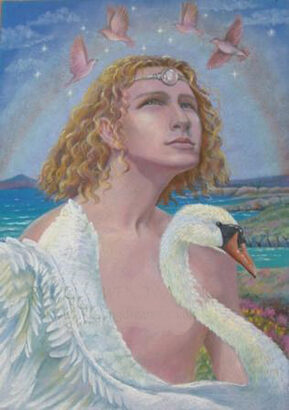
Aengus Og is one of the chief bards of the mighty tribe of Tuatha dé Danann. The handsome son of Dagda is considered the Celtic god of love, youth, and poetic inspiration. The blonde, blue-eyed god was often accompanied by small birds who flew around his head and sang sweet melodies. He often used his cunning wordplay, and undeniable charm helped secure his victories in battles of wit against the elder gods.
He inherited many attributes and powers from his father, Dagda, including his control over life and death. According to ancient Celtic tales, his breath of life can resurrect the dead, like that bestowed onto his father’s magical club. In addition, Aengus Og could shapeshift, which greatly assisted in his quest to find the woman in her dreams that had been transformed into a swan.
Lugh
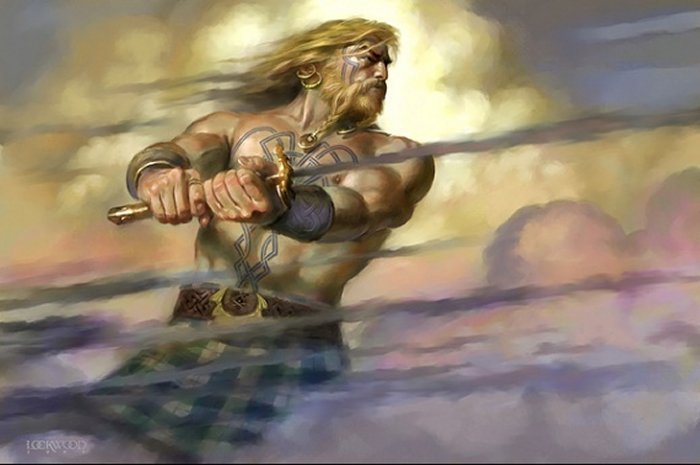
He is considered one of the most prominent gods of the Celtic people as he was skilled in many arts. Lugh was not only a natural king but also an exceptional warrior, smith, historian, sorcerer, and musician. In addition, he was the god of laws, oaths, and truth, mightily protecting his domain against the oppression of the Formorians.
Lugh is well known for his great victory against Balor, who also happened to be his grandfather. During this epic battle, Lugh shot his sling at Balor, which made it impossible for the one-eyed god to open his large eye and poison him. Besides being remembered as a fierce warrior, Lugh is also the father of the legendary Irish hero Cú Chulainn. According to tales, Cú Chulainn is known to be both Lugh’s son and the incarnation in mortal form.
The Morrigan
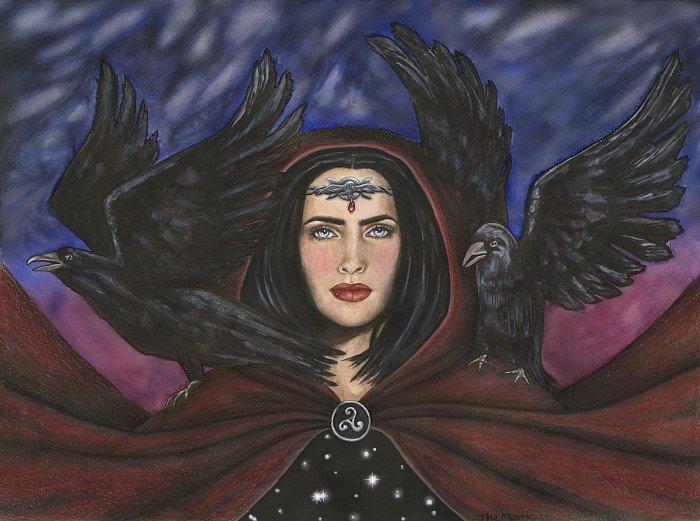
The Morrigan is an influential figure who bestowed ominous prophecies about wars. She granted many ancient heroes and Celtic kings powers that usually came with a price. The famous prophetess had shapeshifting abilities that would often appear in various forms, including a shapely maiden, an old crone, a raven, and a fierce warrior queen.
The goddesses Badb, Macha, and Nemain, make up The Morrigan. Besides working their power as a single deity, the goddesses are known to act independently of each other. For instance, Badb usually appeared as a raven on the battlefield. The shrieks of Badb and Nemain were said to have killed 100 Irish men under cover of night. Her sinister shriek and her ominous presence amidst men’s death inspired the banshee’s origin.
Taranis

Due to its immense power and control of bad weather, he assumed the role of leader and protector of the Celtic pantheon. In addition, he embodied the mystical elements of thunder and storms, which made him a highly revered and feared god worthy of human sacrifice.
Taranis wielded two weapons- a thunderbolt and a wheel- representing his extensive reach across the many Celtic tribes in Europe. The wheel he carried symbolized mobility of the planetary cycles and the powers of the universe. On his other hand is the lightning bolt, which is said to connect Taranis to his primary higher power source. In many Celtic tales, Taranis is said to have formed a sacred triad with two other Celtic gods, Esus, and Toutatis.
Eriu
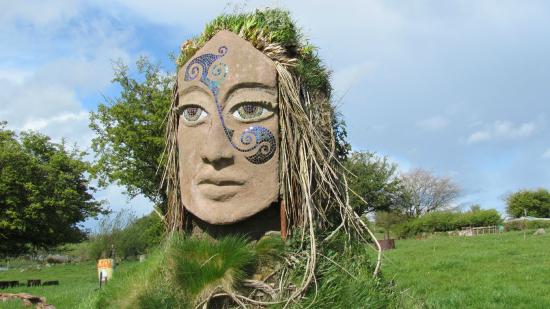
Eriu belonged to the godly race of Tuatha Dé Danann and was born to Dalbaeth and Ernmas. She and her sisters Banba and Fodla were married off to three kings, all of whom were grandsons of Dagda.
As a mighty queen with divine powers, Eriu demanded the retreat of the Milesians from Galicia. After receiving a negative response and a slew of insults from one Milesian, Eriu used her powers to infuse her words with magic, eventually killing the man. As defeat was imminent for the Tuatha Dé Danann, Eriu made a final request for the land she and her sisters hold dear to be named after them. To this day, Ireland still bears the name as a remembrance of the triumvirate of goddesses.
Cernunnos

Cernunnos was a mysterious figure in Celtic mythology. He was always surrounded by animals and ruled over all wild places. As a powerful creature with supernatural powers, tales told stories of his feats bringing natural enemies together in peace. He was gifted with the ability to mediate between man and nature and tame predator and prey so they could coexist harmoniously.
Much of the stories about Cernunnos centered on his prowess, love, and leadership over his animal subjects. He was also known as a god of fertility as he ruled over nature and nurtured all trees and plant life. He is also revered as a protector and generous provider of ancient rural tribes and hunters.
Balor
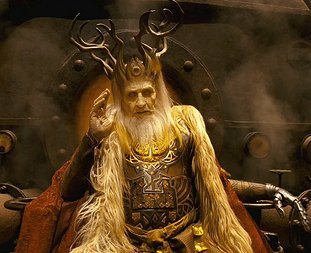
The influential leader of the demonic race of Formorians was notorious for oppressing the Irish people and the Tuatha Dé Danann. Balor got his evil eye when he once spied on the Druids of his father, who were performing spells and incantations. The fumes from the Druid rites entered his one eye and gave him the power of death.
Balor’s evil eye was considered an indispensable weapon in many battles. It is said that his glance can immediately petrify and kill men. The death of Balor was prophesized in his youth. According to the prophecy, the Formorian leader will be killed in battle by his grandson. He imprisoned his only daughter, Eithne, to prevent the prophecy from coming true. Despite this, Eithne still met the man of her dreams. She soon gave birth to Lugh, who killed Balor with a slingshot at his poisonous eye.